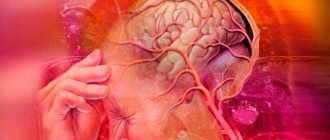.
When stopping the use of hallucinogens, every drug addict begins to experience withdrawal symptoms. It can last 1-3 days or last 2-3 months. It all depends on the duration of use, the type of drug, and the patient’s condition. Withdrawal is accompanied by excruciating pain and mental disorders. If withdrawal symptoms are not relieved in time, the patient will either break down or may die from severe pain.
Initial symptoms
To cope with withdrawal, you need to learn to recognize its approach. The first symptoms appear within 7-15 hours after the last dose. The following psychological symptoms signal the approach of withdrawal:
- irritability;
- a sharp change from activity to a passive state;
- lack of control of emotions;
- aggression;
- paranoid tendencies.
Heavy sweating appears. The patient feels either hot or cold. Severe chills may begin. The pupils stop reacting to light after an hour. At this stage, you need to seek medical help, because subsequent symptoms of withdrawal often provoke a person to use drugs in order to alleviate their suffering.
What deviations are expressed in withdrawal from a psychoactive substance?
Each drug has its own specific pattern of withdrawal symptoms. For example, withdrawal from methamphetamine is quite mild, the clinical complaints are unclear and “blurred”. But we can also identify a number of common problems among patients with different types of drug addiction.
These include:
Increasing psychophysical discomfort.- Runny nose, lacrimation, the presence of overly wide or narrow pupils that do not respond to light stimuli.
- Chills, weakness, excessive sweating, quickly turning into fever.
- Depression, insomnia, fears, hallucinations.
- Pain in the body of an aching-twisting nature.
- Lack of appetite, nausea, intestinal disorders.
In some cases, there are specific manifestations, for example, among the symptoms of amphetamine withdrawal, narcologists identify severe photophobia, and the patient himself notes attacks of hunger.
Very severe withdrawal occurs when trying to get rid of the abuse of desomorphine, a synthetic version of codeine. In patients with withdrawal symptoms, serious damage to internal organs, tissues, and blood vessels develops. The most terrible complication is gangrene of the limbs, which threatens amputation. Patients with this type of drug addiction live no more than 3 years. It is very difficult to cure them.
Eliminating withdrawal symptoms
The withdrawal symptoms that a person experiences for the first time can be relieved only through medications.
You should not prescribe medications yourself, as this can lead to more serious complications.
Relief from withdrawal symptoms can be achieved by using one of the following measures:
- hypnotic;
- alcohol instead of drugs;
- psychostimulants.
Sleeping pills have a short-term effect, so when self-medicating, the drug addict, in an attempt to prolong sleep so as not to feel pain, tries to take a large amount of the drug at once. Taking psychostimulants is nothing more than replacing one drug with another. Some patients try to replace hallucinogens with alcohol. But, like all the methods described above, it is ineffective and removes the desire to take a dose only for a while. This alternative implies that the patient is constantly intoxicated, which leads to another addiction - alcoholism.
How does a drug addict go through withdrawal?
During withdrawal, the addict falls into apathy and is not interested in anything. He experiences weakness and lethargy. Gradually, apathy gives way to irritability and aggressive behavior even towards close people. During withdrawal, the addict tries to protect himself from communication with other people and experience the destructive pain alone.
Physical symptoms of withdrawal symptoms begin with a runny nose and watery eyes, trembling arms and legs. The situation is constantly getting worse. A runny nose and weakness are replaced by nausea, vomiting, and diarrhea. Convulsions during withdrawal resemble an epileptic attack.
Home methods
Not everyone wants to go to drug treatment centers, so people often try to relieve withdrawal symptoms at home. Before deciding to manage withdrawal symptoms on your own, you need to understand that most drugs are sold only by prescription and cannot be obtained, and also that the person experiencing withdrawal must be under constant supervision. When the toxin is eliminated from the body, vomiting and severe diarrhea occur, which greatly weakens the person. Then comes a phase of pain that is almost impossible to endure. At each phase of withdrawal, the patient’s mental well-being deteriorates greatly, some organs may fail, so think carefully before starting self-treatment.
Patients who have already experienced withdrawal once are completely sure: every little detail is important in treatment; because they themselves know exactly what to do in case of withdrawal.
- You should cut off all ties with drug addict friends, you can even disappear from the city for a while or move altogether. Memories of the “high” can evoke any associations (perfume, furnishings in the apartment, clothes), so try to prepare as much as possible. It is advisable not to go anywhere for several days.
- When the active phase of toxin elimination begins, in order to avoid dehydration, you need to take Regidron. Try to help the person relax. Take a salt bath. A contrast shower in the morning will help tone the body. Give the patient plenty of fluids: plain water, rosehip tea, green tea.
- You can improve the performance of the gastrointestinal tract by taking "Riabal" - it will relieve pain, - activated carbon or "Enterosgel" - will help remove the toxin faster, - "Mezima" or "Pancreasma" - will speed up the processing of food. Detoxification will greatly stimulate your appetite, but you shouldn't rush into food right away. Try to limit yourself to fermented milk products in the first days. Some sleeping pills are sold without a prescription. They should be issued strictly according to the instructions. Help a drug addict cope with psychological withdrawal. Try to find an activity that will distract him from bad thoughts. Doctors strongly recommend using various methods of meditation, looking for a way of relaxation that will allow you not to use synthetic drugs for this.
It is important to remember that self-treatment of drug addiction withdrawal syndrome is possible only if you give up light drugs; giving up the methadone group of psychotropics requires long-term treatment in a hospital setting. Narcology calls methadone addiction the worst. Withdrawal syndrome after stopping this type of drug lasts 2-3 months, and is accompanied by hellish pain, which often causes suicide, breakdown or failure of some systems. In this condition, the patient should only be under the supervision of a doctor.
What does a drug addict do when self-medicating?
A drug addict who decides to self-medicate his illness uses several ways to combat it. The most common one is to relieve withdrawal symptoms. To make the withdrawal period less painful, the drug addict uses various medications. The logic of his behavior is quite simple. He believes that if he can withstand withdrawal, then he will not use “drugs” later. To ease withdrawal, a drug addict can take painkillers and sleeping pills.
During the course of treatment, a drug addict experiences unpleasant sensations. And so, in order to isolate themselves from feeling unwell, the addict takes painkillers or sleeping pills. It is worth noting that the latter are the most popular among addicts. They are ready to swallow handfuls of sleeping pills just to forget and survive the withdrawal symptoms.
Today, the majority of drug addicts are saved from withdrawal by Reladorm. These sleeping pills are available in tablet form. It contains cyclobarbital, which is considered a barbiturate hypnotic. It has been proven that barbiturates form drug addiction. Also, using these pills in large quantities (which is exactly what drug addicts do) leads to encephalopathy, that is, irreversible destruction of the brain.
Do you want treatment? Tired?
Then seek help from those who know what to do
NARCOLOGICAL REHABILITATION CENTER
Even if a drug addict uses not Reladorm during withdrawal, but any other sleeping pill, this will still not lead to anything good. It is clear that after taking sleeping pills, a person falls asleep and does not feel withdrawal. However, after waking up, all pain sensations arise again, and often with greater force. This forces the “addict” to take a heavy dose of sleeping pills again, since the usual (recommended by prescription) dose during the abstinence period will not help you fall asleep.
This cycle of waking up and falling asleep can last from 1 to 2 weeks. An overdose of sleeping pills worsens the well-being of the drug addict. He still feels sick and broken, although the withdrawal symptoms may already be lessening. Moreover, the longer a person takes sleeping pills and the greater the quantity, the more severe his condition becomes.
Hospital treatment
Only qualified drug center workers can help a patient with drug withdrawal from methadone and other strong drugs: heroin, opiates. At the first consultation, the patient's condition is determined. Relatives and the patient himself are interviewed, examined, and tested.
In inpatient settings, treatment with drugs to relieve withdrawal symptoms is carried out in combination with psychological training. Tranquilizers are used to relieve severe pain. These are strong drugs that have a relaxing effect on the muscular system, relieve pain, spasms, and have a strong hypnotic effect. Depending on the intensity of the effect after a tranquilizer, a person can sleep from 12 hours to several days.
Antidepressants are prescribed with great caution, because they are addictive when taken for a long time. Amino acid preparations are prescribed to stimulate the work of brain centers, improve sleep quality, and increase the tone of the whole body. In the most extreme cases, psychotropics are prescribed. They are indicated if the drug provokes a mental disorder: schizophrenia, manic-depressive disorder.
What is withdrawal?
The syndrome is a group of disorders - somatic and psychopathological. The main reason for withdrawal symptoms is a reduction in the dosage of the drug, refusal to use or take it. The syndrome appears due to physical dependence on the drug. The severity of the syndrome directly depends on how quickly the drug is metabolized. Drugs individually affect the body; elimination and withdrawal differ in each individual case. For example, it is difficult to free yourself from the effects of taking Methadone - withdrawal symptoms can last more than a month.
Many people think it is possible to relieve symptoms at home, thinking that there are pills for withdrawal symptoms. People who are faced with such a problem and who are worried about a loved one believe that an addict can experience withdrawal symptoms within the walls of his monastery without going to the hospital. This is not true, you should not believe this information. On average, withdrawal takes 1-2 weeks. Many drug addicts say that they are experiencing real hell during this time. How many days a drug addict’s withdrawal lasts is determined by the individual characteristics of the body, the drugs used, and the duration of the addiction.
Withdrawal syndrome is manifested by weakness, cramps, vomiting, nausea, pain, diarrhea, and insomnia. At the same time, there is a disruption in the functioning of internal organs. Experiencing a breakdown at home is dangerous - a new breakdown may occur, and death is likely.
If there is no qualified doctor nearby to perform detoxification, the patient should not be left alone. It is important to monitor his physical and psychological condition. Treatment is complicated by the unavailability of medications to ease withdrawal symptoms; they are sold only by prescription in specialized clinics. . Drugs for relieving drug withdrawal are not chosen independently.
Detoxification
The main goal of inpatient treatment at first is detoxification. It is carried out in three ways.
- Physical - removal of the toxin occurs through mechanical methods: gastric lavage, skin, mucous membranes, hemodialysis, blood purification by absorption of various liquids.
- Biological – administration of vaccines or biological serums.
- Chemical - neutralization of toxins by oxidation is carried out through the introduction of an antidote. The procedure is carried out at the very beginning of treatment.
In addition to the procedures themselves, they use drugs that help actively absorb toxins, remove them and increase the body’s overall resistance. Activated carbon helps to quickly cleanse the body, but it also removes calcium and other beneficial substances. You will have to take it for quite a long time, so to maintain normal functionality of the body, vitamin complexes containing vitamins C and group B are prescribed. Acute vomiting and diarrhea are relieved with the drug “Detox”.
The toxin will be completely eliminated from the body in 21 days. After this, it is important to continue psychotherapy.
Development and symptoms of withdrawal
Withdrawal is the downside of drug addiction after taking a dose. It manifests itself in the form of a complex of disorders that depend on the type of drug, the age of the addict and the presence of other diseases of the body. Withdrawal also has a great impact on the psyche of the addict. Many of them, having experienced withdrawal once or twice, are afraid of its repetition. Even if they want to quit drugs, they don't do it as soon as they feel withdrawal. However, with a competent approach to drug addiction treatment, the withdrawal state is tolerated quite easily.
Among narcologists, withdrawal is called narcotic withdrawal syndrome. It develops in cases where a person does not take the next dose of a substance for a long time. In a healthy person, a drug entering the body causes a natural reaction to get rid of it. In drug addicts, it begins to play a significant role in metabolic processes. When an addict has been without drugs for a long time, the body begins to “demand” them, starting withdrawal. This is an increase in body temperature, increased blood pressure, pain in bones and joints, as well as general weakness. From a mental point of view, withdrawal refers to neuroses, psychoses, feelings of fear and aggression. To overcome withdrawal symptoms, you need to know all these symptoms.
Withdrawal can continue from several days to months, depending on the factors mentioned above. The best option for helping with withdrawal symptoms is hospitalization of the patient. There he will receive full help. It is known that drug addiction develops due to a person’s inability to withstand life’s difficulties. However, if you work with a psychologist, a person will get rid of the desire to take drugs.
You can understand that a loved one is experiencing withdrawal symptoms by these signs. At first he becomes restless and has difficulty sleeping at night. Also during this period there is increased sweating and salivation, chills, and general weakness of the body. If a person does not find the drug, he begins to experience more severe symptoms: aching bones and joints, increased temperature and pressure, convulsions, fear.
This condition can last from several days to a couple of months. People who have little experience with drugs endure withdrawal more easily, and with willpower they can overcome it. However, most drug addicts are unable to endure the “breaking” pain and take a new dose of the drug. To alleviate the body's condition during withdrawal, you should consult a doctor.
Complementary therapy
In addition to the brain, psychotropic drugs affect other organ systems. Drug addicts often experience cirrhosis of the liver and hepatitis of all types. The condition of the organs will determine the entire clinical picture of withdrawal.
During drug intoxication, liver cell regeneration occurs with a predominance of the fibroplastic process. To get rid of withdrawal symptoms, medications are used that will help restore the organ and protect it from the negative effects of excreted substances.
- Naloxone is a specific antagonist.
- Cordamine, Caffeine-sodium benzoate, Sulphocamphocaine are psychostimulants.
- Hormones - Prednisolone, Dexamethasone.
- Inhibitors – “Kontrikal”, “Gordox”.
- Hepatoprotectors – “Essentiale”, “Heptral”.
Consequences of withdrawal
The consequences of a breakdown include changes occurring in the human body. They begin a few hours after the end of the last use of the drug. The complete feeling of missing a dose will appear after a couple of days.
In the process of life, the metabolism of psychoactive substances is involved. On average, withdrawal symptoms last up to 10 days. The result is the body’s independent struggle against the lack of drugs; organs and organ systems relearn how to synthesize the substances the body needs in the right quantities. This does not always work out - a lack of vitamins and minerals affects the overall functioning of the body. In most cases, this is the main barrier to stopping withdrawal. Situations are extremely difficult when the body cannot independently produce vitamins, substances, vital elements - a person faces death. Synthetic drugs cause stronger withdrawal symptoms than drugs made from plants. Relieving drug withdrawal at home in any case is an extremely dangerous undertaking, guaranteeing harm to a weakened orgasm.
Possibility of relapse
Surviving withdrawal is half the battle, then it is important to prevent a breakdown. Typically, those who have experienced withdrawal no longer want to repeat it, so they either continue to use the drug regularly, avoiding any omissions, or give up completely. But the psychological factor is quite difficult to eliminate, which is why working with a psychotherapist at all stages of treatment is so important.
It is necessary to maintain the patient's confidentiality as much as possible. This will make it easier to start a new life. The ideal option is to move to another city, change occupation. A person must undergo social adaptation and get used to solving his problems without the use of psychotropic substances that help him relax and have fun. During the sessions, a person learns to enjoy completely different things and put the experience gained into practice in real life.
How is treatment carried out in our rehabilitation center?
We understand how seriously the loved ones of a drug addict experience. Therefore, we are making enormous efforts to pull him out of the state of withdrawal syndrome. Subsequently, we provide him with the necessary psychological assistance to resume normal life in society.
There are many methods for returning a person addicted to drugs to normal life. Some clinics use only drug treatment, bring the patient back to normal, and then discharge him from the clinic. Our center has a different policy.
- Initially, we relieve the spastic conditions that a person experiences during a period of lack of narcotic substances in the body. For this, we have the necessary equipment and medications, with the help of which the patient is brought out of their withdrawal states.
- The second stage of our work is to determine the drug addict’s level of readiness for treatment. Conversations are held with him and his relatives. If the addict is not sufficiently motivated to succeed in treatment, our psychotherapists, narcologists, and psychologists carry out work as a result of which the patient begins to realize that he needs help.
- Next, our specialists carry out a number of activities, the leading role in which is occupied by a 12-step rehabilitation program. Thanks to the world-famous method, a huge number of people suffering from this addiction are cured from drug addiction and alcoholism.
- After successfully completing therapeutic sessions, the patient must be adapted to life in society. We help him make the right decisions about his future existence in a healthy life, help him find a job, and set him up for positive communication with loved ones.
After completing a rehabilitation course in a hospital setting, it is difficult to return to everyday life, restore friendships, and work relationships without the help of relatives. Psychological support from those close to you is extremely important for a former drug addict. Therefore, we strongly recommend that you do not leave a person who, for any reason, finds himself in a situation where he begins to use drugs or alcohol. Try to treat the person humanely, do not leave him during a difficult period. By doing this you will not only help him return to a healthy lifestyle, but also possibly save him from premature death.
Cost of our center services
| Anonymous telephone consultation | For free |
| Consultation in the office | For free |
| Development of a rehabilitation plan | For free |
| Groups for addicts and codependents | For free |
| Lifetime support | For free |
| Individual consultation via video conference with a narcologist | 500 rub./hour |
| Detoxification of the body | from 3000 rub./day |
| Convincing an addict to get treatment | from 5000 rub. |
| Delivery of an addict to a rehabilitation center | from 5000 rub |
| Hospital budget | from 1250 rub./day |
| Hospital-standard | 1720 rub./day |
| VIP hospital | from 3000 rub./day |
Physical dependence on a drug
Every drug sooner or later leads to physical dependence on it when the addict begins to use surfactants regularly. The rate of formation of stable physical cravings and the occurrence of withdrawal symptoms is primarily determined by the type of drug, as well as the mode of use and the psychophysical characteristics of the addicted person.
You will not confuse the onset of physical dependence with anything, since now withdrawal from the drug occurs. This phenomenon is called differently: drug withdrawal, withdrawal syndrome, withdrawal syndrome. The essence is always the same - a drug addict experiences pain and discomfort, his body cannot function normally without the intake of psychoactive substances.
For use to become regular, something must force a person to take drugs. For what reason does a seemingly healthy person decide to undertake dangerous experiments?
Why does it appear?
When a person constantly takes drugs, the body stops producing substances that protect against pain, cause a feeling of joy, and many others. Instead of natural mechanisms, these functions begin to be “performed” by the incoming drug. As a result, natural neurotransmitters, such as dopamine, adrenaline and others, are replaced by those coming from outside.
During this period, tolerance develops. An addict no longer uses drugs just to get high, but to feel normal. To obtain the same effect, an increasingly larger dose is required. And this, in turn, causes the body to produce less and less of its own substances.
As a result, as soon as the addict reduces the dose or refuses it, painful symptoms and negative consequences of use occur.










